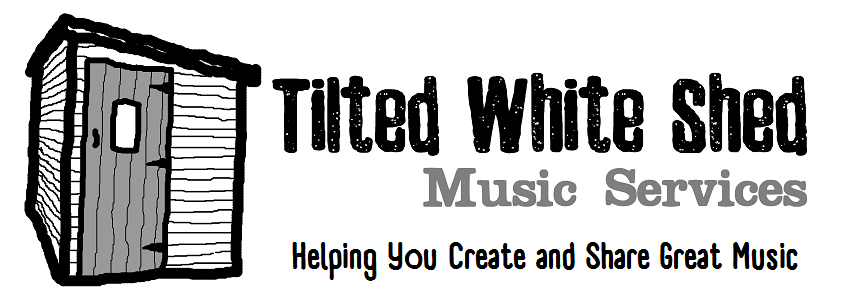Okay, so the lyrics are super-important and the melody is crucial. What about the harmony?
In fact, there are times when your harmony will make or break your song’s ability to catch a listener’s ear.
It’s All Been Done
If you think that there are too few chords available for you to create a truly unique harmony shape, you’re probably right. If it’s an appealing harmony shape, it’s probably been used before. Don’t let that stop you from trying out new shapes and learning all you can about the harmony.
One of the most appealing and most common chord progressions is the I-VI-IV-V (the “one, six, four, five”) progression, or the different combinations of those four chords in different orders. So many well-known and well-loved songs were written on these four chords. This video by the “Axis of Awesome” comedy team drives home this point in a humourous way. And although many songwriters cringe at the thought of writing a song on these four chords, there’s a good reason so many writers have done so – IT WORKS. These four chords cover the bases of harmonic “function” (more on that to come), set up wonderful tensions and resolutions, and provide the foundation for a satisfying listening experience.
Having said that, I encourage you to come up with something less common, and interesting, that fits with your melody and the emotion in your lyric, in order to write a song with that “something special”.
Waddya Mean, Harmonic Rhythm?
Even if you choose to use the same chord progression as you’ve heard in another song, you can add your creativity to the harmonic rhythm: the measure of when your chords change. So many writers fall back on changing the chord at the beginning of every new bar. You have the choice to go against that habit. How about trying:
- Changing to a new chord after two, three or four full bars of music
- Changing to a new chord before the end of the bar
- Making a pattern of longer and shorter chord durations to get creative
Of course, the harmonic rhythm needs to make sense in the context of the lyric you’ve written. Pay attention to the phrases in your lyric, and consider moving to new chords at a time which supports those phrases.
What’s Your Function?
The harmonic function of each chord in your song is what determines how much musical tension that chord can introduce, and the movement between chords of the same or different function will have an impact on the emotion of the harmony. Chords other than the root (the “home”) chord will typically introduce a feeling of tension, of wanting to go back to the root chord. That tension can be a strong feeling – more desperate for resolution – or a moderate feeling. Much of that has to do with the harmonic function of each chord.
Harmonic functions are:
- TONIC – the root chord and strongly-related chords
- DOMINANT – the “V” or “5” chord (the chord based on the fifth note of the musical scale in the key of your song) and its strongly-related chords
- SUBDOMINANT – the “VI” or “4” chord (the chord based on the fourth note of the musical scale in the key of your song) and its strongly-related chords
I’ll oversimplify (we can have a longer discussion on harmonic function later) and basically say this: the harmonic function with the most tension (the most longing for resolution) is the DOMINANT one, because its chords will include the leading note (the VII) of the scale, which is a mere semitone away from the root note. This applies a great amount of harmonic tension because of its close proximity to the stable, comfortable root note. DOMINANT chords are the V and its related chord, the VII (which shares two of three notes with the V).
SUBDOMINANT chords do not contain the leading note, and as such have a less desperate wanting for resolution. However, they do contain the fourth note of the musical scale, which, in the major scale, is a mere semitone away from the lovely third note in the scale, which similarly creates a tension looking for resolution, but it is not as strong a tension as in the DOMINANT. SUBDOMINANT chords are the IV and its related chord, the II (which shares two of three notes with the IV).
TONIC chords are those which give the greatest amount of harmonic stability and resolution. TONIC chords are the I and its related chord the VI (again, with two chord notes in common).
Try playing two chords in order of Tension-to-Resolution, and you’ll be playing what we call a “cadence”:
- a “perfect” cadence moves from DOMINANT to TONIC, most precisely from V to I, but you’ll also feel the weight of the resolution when moving from V to VI, or even from VII to VI
- a “plagal” cadence moves from SUBDOMINANT to TONIC, usually from IV to I, but you’ll feel the same kind of resolution when moving from II to I, or from II to VI or from IV to VI
There’s one chord I haven’t mentioned, and it’s often a source of contention in these discussions. The III chord has just as many notes in common with the I as it does with the V, and the III chord even contains the leading note, so how does it function? Some will argue that it can function as either a TONIC or a DOMINANT. Indeed, play it and you’ll hear that it is not as desperate for resolution as a V or VII chord, but it definitely doesn’t offer the stability or harmonic resolution of a TONIC chord. Try the movement from I to III and it feels like a building of tension. Try the movement from V to III and it doesn’t feel like the tension has been properly resolved. So I’d generally agree with those who suggest you treat the III like a DOMINANT, and know that it can be very useful to you when gradually building harmonic tension.
As a side comment, I’ll postulate that the III’s leading note doesn’t cry out for resolution because it isn’t a chord note which gives “colour” to the chord. In any triad built of notes i-iii-v, it is the i note that gives the chord its identify and the iii note which colours the chord minor or major. The v note offers less DNA to the chord, and as such I suspect it loses its ability to generate that strong tension in the III chord.
So What Does Function Do For Me?
Thanks for bringing me back to the point. The beauty of understanding harmonic function is that it can give you a playground in which to experiment with new chords for your harmony. Anywhere in your song that you’re considering a TONIC chord, try substituting the other TONIC chord. Anywhere in your song that you’re considering a SUBDOMINANT chord, try substituting the other SUBDOMINANT chord, and so on. You’ll find that your melody is likely to work with both your original and your substituted chords, and you’ll get a different emotional flavour as a result.
On another point, songwriter James Linderman has done extensive research on harmonic function, and published a book for songwriters called “Song Forms for Songwriters”, in which he maps the chord progressions of a hundred hit songs by their function, NOT the actual chords. He doesn’t even name the songs, but you might be able to guess by choosing chords to match each function in the song’s functional progression. Whether or not you can identify the song, his point is this – after examining the FUNCTIONAL progression of a song that proved to be popular, writing a new song with the same functional progression (even if you’re in a different key and choose your own chords to match each function) can get you started on the right foot by using a proven emotional chord journey.
I hope I’ve offered something that can inspire you to get creative with your chord progressions, because today it’s all about the harmony!
…except when it’s about the groove…
If you like what you read above, maybe you'd like to work with Allister at Tilted White Shed? Reach out through the Contact Us page.


